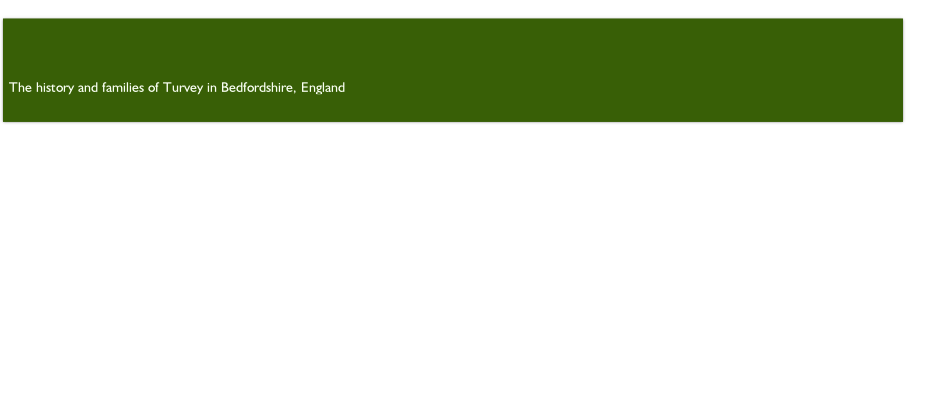

©2011 Deborah Richardson

Privacy Policy
Copyright


This was a school or Institution for 'the Industrial training of Juvenile Offenders'.
The boys were boarded there with clothing and food also provided. Young lads who had been convicted of 'an offence punishable by prison' were sent here up to the age of 16. Occasionally boys up to 19 years old could also be sent by a court.
Turvey's Reformatory was founded by T.C. Higgins of Turvey House in 1857 and was certified for use on 9th April 1857. It housed between 60 and 70 boys who were 'maintained and instructed in agricultural pursuits'. These teenagers came from quite far afield.
The buildings consisted of:
* large school room
* apartments for the superintendent & matron, assistant matron, schoolmaster & two labour masters
* dormitories & smaller sleeping rooms for the boys
Out buildings included:
* a workshop
* tool-
* bakehouse
* dairy & open shed
* farm buildings including a barn, sheds and stables.
The school farm was originally about 45 acres, with a further 75 acres purchased
in 1887. The boys were employed on the farm and taught various agricultural skills
-
Regular Visitors:
A medical officer visited once a fortnight to ensure the boys were all in good health.
The children were given a basic education by local clergymen.
Turvey Reformatory
(Bedfordshire Reformatory)
Turvey Reformatory was officially called Bedfordshire Reformatory. In 1933 it was renamed as Carlton Training Approved School.
The original location was Northey, which was part of Turvey. This land is now part of the nearby village of Carlton.
It is now home to a big Emmaus charity shop which was set up in December 2001 by Dom Gregory, Superior of the Monastery at Turvey Abbey.
( Bedfordshire Reformatory )
(Bedfordshire Reformatory)
Occupation
The original certification (14 April 1857) was for 70 boys.
It was recertified on:
14th April 1902 for 100 boys
7 July 1911 for 120 boys
December 1924 for 115 boys
Between May 1857 and the end of 1860:
85 boys were admitted
39 were discharged
8 were transferred to other reformatories
6 died
2 ran away
The Staff
In 1864 the superintendent was called Joseph Roberts.
From sometime before 1870 until 18th January 1900 the Turvey Reformatory was being run by a Hereford born man called John Jones (born 1835). He was called the schoolmaster until about 1900, and then the Superintendent.
His wife, Mary (born 1838) was his assistant and the Matron until 1900.
In 1885 there was an assistant schoolmaster called Mr Wilson.
From 1891, John Jones’ eldest son, George, was a paid monitor and assistant schoolmaster.
From 1893 there was an additional schoolmaster,a Turvey born man called John Gardner. He was born in 1837.
By 1898. Government aid meant that the Reformatory was self-
On 1st February 1900 a new superintendent was appointed, Mr James Reader Jones.
From 1900 the matron was Mrs Woodman Jones who was assisted by Eleanor A. Jones. John Gardener was still a schoolmaster.
In 1901 the Bedfordshire Reformatory was bring run by Superintendent, James R. Jones (aged 37) and his widowed mother, Mary, 63 was the Matron.
A bandmaster and drill instructor, Frederick Lincoln, was appointed on 1st January 1903.
Paying the fees
The families of the inmates were expected to contribute to the boys’ keep.
At the end of the 1880's this was around 5 shillings a week, and failure to pay it was a criminal offence.
The Bedford Gaol archives include details of nine men who were given prison sentences for failing to pay their son’s fees.
Gaol is the English spelling of jail, but now rarely used.
What happened next?
It was quite hard for a boy who had spent time in a Reformatory to get work once his sentence was finished.
Some signed up to “go to sea”, which was a traditional occupation for men who were having trouble finding employment for various reasons.
Some boys from Bedfordshire Reformatory were sent to Canada in the 1880's and 90ls. Sending the young offenders abroad was considered a good solution as it meant a fresh start for them and supplied labour to the growing country.
These emigrations were handled be The Philanthropic Society. Documents from the time describe it as “our most satisfactory mode of disposal”. Many English reformatory boys were sent to Canada at this time.
For more information on the reformatory children sent to Canada, see The Golden Bridge:
Young Immigrants to Canada 1833-

Click here to read a letter from
Mr W.F. Higgens, chariman of the Reformatory, written in 1887, detailing his belief that sending the boys to Canada was a very positive move.


